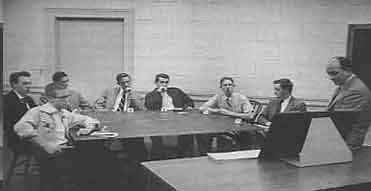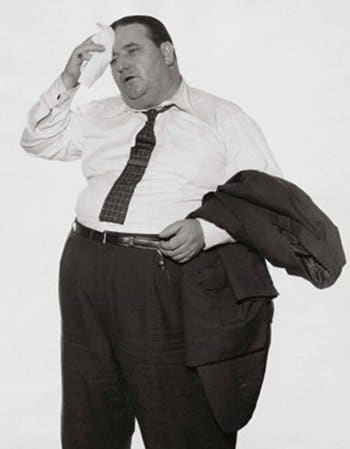
On February 19, 2012, a group of sixteen of the nation’s top snowboarders and skiers slipped through the Stevens Pass ski area boundary gate and its “continue at your own risk†warning sign. Located in Washington’s Cascade Mountains, their ultimate destination was a backcountry run called Tunnel Creek, which is renowned for its open meadows, smooth powder, and exhilarating 3,000-foot vertical drop, but also for its regular avalanches. The conditions that day were worrisome for an already vulnerable area: the forecast rated the avalanche danger as “considerable to high†with “human-triggered avalanches likely.†But a storm had just dropped a ton of new, deep powder on the mountain, and members of the group did not want to miss out on the thrills of both making the run and doing it with a bunch of experts who rarely found themselves all together.
Still, as the skiers and snowboarders assembled at the top of Tunnel Creek, many were apprehensive. As John Branch wrote in a special feature for The New York Times:
“Unspoken anxiety spread among those unfamiliar with the descent. The mere size of the group spooked some. Backcountry users of all types — skiers, snowboarders, snowmobilers and climbers — worry about how much of a load a slope can absorb before it gives way. They worry about people above them causing an avalanche. When it comes to the backcountry, there is usually not safety in large numbers.â€
No one gave voice to their worry, however. “If it was up to me, I would never have gone backcountry skiing with 12 people [a few in the group had split off],†Megan Michelson, ESPN journalist and member of the Tunnel Creek group remembered. “That’s just way too many. But there were sort of the social dynamics of that — where I didn’t want to be the one to say, you know, ‘Hey, this is too big a group and we shouldn’t be doing this.’ I was invited by someone else, so I didn’t want to stand up and cause a fuss.†Other members of the group were uneasy too, but told themselves that the experts of the group (which included the director of marketing at Stevens Pass) wouldn’t be doing it if it wasn’t safe. Many in the group had been down the backcountry run dozens of times, and the new guys figured they’d just follow their lead. “There’s no way this entire group can make a decision that isn’t smart,†ski photographer Keith Carlsen said to himself. “Of course it’s fine, if we’re all going. It’s got to be fine.â€
As the skiers and snowboarders started their descent, they triggered a massive avalanche; 7,000 cubic meters and 11 million pounds of snow began a ferocious 70mph slide down the mountain. Five members of the group were swept up in it, three of which were gruesomely pummeled and killed.
In the aftermath of the tragedy, the survivors, Branch writes, were left with difficult questions:
“They wondered why they recognized all of the danger signs, starting with the avalanche report that morning over coffee, but did not do enough to slow or stop the expedition…They wondered how so many smart, experienced people could make the types of decisions that turned complex, rich, enviable lives into a growing stack of statistics.â€
***
Last week we discussed the paradigm articulated by Lt. Col. Dave Grossman that people can be broken into three groups: sheep, sheepdogs, and wolves. Wolves are the bad guys of the world, the evil sociopaths who seek to harm and exploit others. Sheepdogs are the guardians and protectors of society, those that aren’t afraid to stand up for right, even when it means going against the crowd, and have the courage to face danger and save others. Grossman argues that people who are fully wolf or fully sheepdog make up a tiny percentage of the population – about 1% each.
The rest of us lie somewhere on the sheep-sheepdog continuum, with the vast majority of the population firmly on the sheep side. Almost all of us are sheep, Grossman argues, although he doesn’t necessarily mean that in a derogatory way — it’s simply to say that most people want to get along with others, are inclined to go with the flow and not make waves, and aren’t regularly faced with dangerous or truly unethical situations and thus don’t know how to behave when they are.
Despite this, most men probably think that they’re sheepdogs, as is evident even from just the comments on the first post in this series. Few people can admit to being sheep. But it’s nothing to be ashamed about. We’ve all been biologically, psychologically, and socially conditioned into sheepdom. Today we’ll explore the nature, widespread prevalence, and causes of human “sheepness,†so that we can understand how to train ourselves to overcome these natural inclinations. Below, you’ll find eight reasons, or more accurately, sociological and psychological concepts and theories, that cause us to follow rather than lead.
1. We’re Affected by the Normalcy Bias

When dangerous or unexpected events occur, you might expect that our natural response would be to spring into action and either fight or flee. But it’s not. Instead, we often react to a crisis by not doing anything at all; we just sit there and act like everything is a-okay — even if people are dying around us. In short, our natural tendency is to go like sheep to the slaughter.
First responders call this tendency to act like everything is fine during traumatic events “negative panic.†Psychologists call it the normalcy bias. Our brain is predisposed to assume that things will be normal and predictable all the time. When things aren’t normal, it takes our brain a long time to process this. Instead of springing to action when something unexpected happens, our brain kind of shrugs and figures that what is going on can’t be so bad, because truly bad events are so out of the ordinary. Many people who witness traumatic events report that it felt surreal, like they were watching a movie and it wasn’t really happening.
33-year firefighting veteran Jack Rowley saw normalcy bias play out on a regular basis at bars in Columbus, Ohio. Fires were surprisingly common at bars on Saturday nights and whenever Rrowley showed up, he’d see smoke quickly filling up the establishment. But instead of mayhem, he’d find folks just sitting at the bar “nursing their beers.†He’d ask them to evacuate and the customers would say, “No, we’ll be just fine.â€
Researchers writing in the Journal of Fire Protection Engineering confirmed that what Jack Rowley saw at bars in Columbus is typical of how people respond to fires:
“Actual human behavior in fires is somewhat different from the ‘panic’ scenario. What is regularly observed is a lethargic response. People are often cool during fires, ignoring or delaying their response.â€
Normalcy bias is also what keeps people from taking proper precautions when major storms like hurricanes or tornadoes hit. They see and hear the dire warnings, but don’t take action because they think, “Well, I’ve seen these warnings before and nothing happened last time. Things will stay normal.†Many victims of Hurricane Katrina were killed on account of normalcy bias. Sure, they heard the dire warnings, but they shrugged them off, thinking everything was going to be okay – they had ridden out other hurricanes before.
This phenomenon also keeps people from making their own emergency preparations when they see disasters played out in other areas of the country or world. “Terrible, terrible,†they say as the sun shines and the birds tweet outside their own window. “But that will never happen here.â€
Normalcy bias manifested itself in dramatic fashion during a plane collision in 1977 that killed 583 people. Two 747 jumbo jets collided with each other just above the runway on the small island of Tenerife. After the collision, one jet tumbled to the ground and exploded, killing all 248 passengers on board.
The other jet crash-landed, but didn’t explode. The collision sheared away the top of the jet and flames began to take over the aircraft. Passengers who survived the initial collision could have escaped unharmed, but they had to act fast. Paul Heck, a passenger on the burning plane, sprung to action. He unbuckled his seatbelt, grabbed his wife’s hand, and hightailed it to the nearest exit. They, along with 68 other passengers, survived, while 328 died.
In an interview after the disaster, Mr. Heck noted how most people just sat in their seats acting like everything was fine even after colliding with another plane and seeing the cabin fill with smoke. Researchers believe that passengers had a little over a minute to escape before being consumed by the flames, and are convinced that if more people had taken immediate action instead of remaining in their seats pretending like things were okay, the survival rate would have been much, much higher.
2. We’re Influenced by the Bystander Effect
In February 2010, Valentino Verner was shot multiple times at a fried chicken restaurant in Tulsa, Oklahoma. Verner survived the barrage of bullets, but needed treatment quickly if he was to survive. You’d think the customers or workers in the restaurant would immediately go to the aid of a man who had just sustained several gunshot wounds, but that’s not what happened.
Instead, workers continued to ring up orders and customers stepped over the dying man to get their chicken and fries. When first responders arrived, they had to fight through the crowd of people waiting to get their food. None of them were helping Verner, who would later die at the hospital from his wounds.
In April 2010, Hugo Alfredo Tale-Yax was stabbed to death in New York City after assisting a woman who was being attacked by a robber. Yax laid on the sidewalk for more than an hour before firefighters arrived. Almost twenty-five people walked by without stopping to help. Some folks stared at Yax’s bleeding body as they went by, and one bystander even callously took pictures of Yax before walking away from him.
What causes people to show such indifference to human suffering? Part of it is likely the normalcy bias, but another contributing factor is the bystander effect.
Our inclination to help or take action when we see a threat or a need diminishes whenever we’re part of a group. You think that someone else in the group will do something, so you hold back. The problem is, that’s exactly what everyone else in the group is thinking too. With everyone waiting for someone else to do something, no one does anything.
Sociologists have been able to replicate the bystander effect in a lab setting. In one experiment, researchers solicited volunteers to fill out a questionnaire. The volunteers were divided into three groups and placed in different conditions. The first group filled out the questionnaire in a room alone, the second group filled out the questionnaire in a room with two other volunteers, and the third group filled out the questionnaire in a room with two confederates – actors who pretended to be normal volunteers but were really in cahoots with the researchers.
As the participants filled out the questionnaire, smoke began seeping into the room. When volunteers were alone, 75% reported the smoke to the experimenters. In contrast, just 38% of participants in a room with two other people reported the smoke. In the final group, the two confederates in the experiment noted the smoke and then ignored it, which resulted in only 10% of the volunteers saying anything to the researchers.
Whenever we read or watch stories of people not taking action when encountering human suffering, our reaction is to be morally outraged. But it’s easy to judge people succumbing to the bystander effect when you’re sitting alone in the comfort of your home. Before you condemn these folks, understand that they were simply following a deeply ingrained sociological and psychological tick that all humans have. Chances are you would have behaved exactly the same way if you were in their shoes. And if you’re convinced that you wouldn’t, you’re just deluding yourself because…
3. We Overestimate Our Ability to Thrive in Dangerous Situations
According to the Dunning-Kruger effect, we typically overestimate our competence on tasks with which we have very little experience. The Dunning-Kruger effect explains why my chubby 12-year-old self derided the rubes on Nickelodeon’s Guts! who couldn’t do the events correctly. (“That’s not how you do the Invisible Boat you nincompoop!â€) I also thought I would kick-ass on the Aggro Crag. But I had no clue how I would actually perform if I was in their shoes because I had no experience bounding around the Extreme Arena attached to a bungee cord.
I see grown men doing the same thing that I did as a kid all the time. Instead of going on about how they’d take home a piece of the rock, they thump their chests and talk big on how they’d kick ass in a bar fight or survive the apocalypse or definitely do the right thing in a morally sticky scenario.
But it’s all talk.
These guys have likely never faced perilous or intense situations, so they’re going to overestimate their capacity to excel.
In my experience, the folks who have devoted their lives to preparing for life-threatening situations or have actually faced danger are much humbler and more realistic about their abilities. While they have a quiet confidence that they can rise to the challenge, their confidence doesn’t lead to hubris. They see their deficiencies and understand that there are some things in a dangerous scenario that are out of their control.
Bottom line: If you’ve never faced a dangerous or morally precarious situation, but think you’d definitely thrive in one, that’s just your sheep brain saying “Baaa.â€
4. We Have a Tendency to Conform
We’re social animals. It’s in our nature to want to belong and be a part of a group. Being hardwired to retain our membership in a group was essential for our ancestors’ survival. There’s safety in numbers. It’s much easier and safer to navigate the savanna and kill a mastodon in a hunting party than it is by yourself. Moreover, being part of a group gives you access to information and resources that you wouldn’t have as a loner.
One of the mechanisms we’ve evolved to ensure we can attach ourselves to a group and not be ostracized from it is conformity. As Westerners, we like to think that we’re unique individuals who can rise above peer pressure (and that peer pressure only exists as part of the DARE curriculum), but we’re not. Conformity is “our default mode,†as psychologist Noam Shpancer points out. We instinctively hone in on social cues and the body language of others and adapt our behavior to mirror them so we gain acceptance.


In the conformity experiments conducted by social psychologist Solomon Asch, one real participant was put into a room with six “confederates” of the researchers who would all answer a question incorrectly, leaving the real participant with the decision to stick to what he thought was the right answer, or follow the group consensus.
In the famous Asch conformity experiments, seven college-age men were placed in a room and asked to answer questions as to which black line in a group of them printed on a note card matched the line on the reference card. Only one of the seven men was a “real participant,†while the other six were confederates of the researchers. The real participant was placed at the end of the table so he would be the last to answer after all the confederates had taken their turn. During some trials, the confederates would all give the obvious, correct answer, while in others, they would all give the incorrect answer, placing the real participant in a stressful position: would he stick to his guns and give the answer he himself knew to be right, or bow to peer pressure and give the same incorrect answer as the confederates? The results were striking. In the trials where the confederates gave the right answer, the real participants’ error rate was less than 1%, but in the trials where the confederates all gave the wrong answer, the real participants went along with them a third of the time, and 75% of the real participants answered at least one question incorrectly.
When the real participants were informed of the intent of the experiment afterwards and debriefed on their experience, the most common reason they gave for giving incorrect answers was that they experienced a “distortion of judgment,†in that they really came to believe they were actually wrong and the rest of the group was right. Others said they knew the right answer, but didn’t want the other men in the group to look down on them for differing from their responses.
Our deeply set dislike for sticking out and going against the grain should never be underestimated. Our primitive brain doesn’t want to be voted out of the tribe and so we greatly fear looking stupid in front of others. In addition to the bystander effect, I can very well imagine in the example of the plane crash above that many people did not want to be the guy standing up and rushing out of the plane, when everyone else seemed calm.
5. We Operate from a Herd Mentality

Early biologists often wondered how it was that birds could take flight at the same time or bees would decide to move the hive to a new location without a clear system of authority and/or signaling. What they found is that some animals and insects have a sort of collective mind or consciousness, where they observe and mimic each other’s behavior in what biologist Pierre-Paul Grasse termed “cooperation without communication.â€
Recent studies by modern biologists have found that humans operate by a kind of herd or flock mentality as well. For example, researchers at the University of Leeds who were initially interested in the consensus decision-making involved in the migration of birds, found “strong parallels between animal grouping behavior and human crowds.†In an experiment, the researchers had a group of people walk around a building. Most were given no direction on where to go, and were simply asked to stay with the group. A few participants – “informed individuals†— were told to go to a specific target destination, but like the rest, they were forbidden to communicate or signal to the others in any way. Even though they had no idea they were being led by others, the uninformed members of the group invariably ended up following the informed individuals to their respective targets – forming a kind of snake-like line behind them. The researchers concluded that “humans flock like sheep and birds, subconsciously following a minority of individuals.â€
In a large group of over 200, it took only 5% of informed individuals to lead the others to a certain destination without them knowing it. Even when a decision-making conflict was introduced – three of the informed individuals were told to go to one target while four were told to go to another – it took the whole group no more time to reach one of the targets than when all the informed individuals were going in same direction; people simply made a quick, subconscious, and collective decision to follow wherever the majority of informed individuals went.
The results of this experiment can be hopeful in one regard – it doesn’t take more than one informed sheepdog to easily lead people in the right direction and out of harm’s way. The problem of course arises when people act like they know where they’re going or what they’re doing, but do not, and yet others eagerly observe and mimic their behavior – following them right over a cliff.
6. We Depend on Authority Figures to Make Decisions

Another human propensity related to our tendency to conform is our easy obedience to authority, even against our better judgment. Some psychologists speculate that our propensity to obey authority is an evolved trait that ensured the survival and success of early human groups. As human civilization became increasingly complex, people gave up more of their individual freedom in exchange for a more stable, efficient, and prosperous society. Consequently, institutions — be they governments or religions — heavily invested in the social conditioning of young people to obey authority.
One of psychology’s most famous experiments showcased how deeply ingrained our obedience to authority can be. In 1963, Stanley Milgram wanted to answer the question of what caused the Nazis to mercilessly inflict suffering and death on thousands of Jews during the Holocaust. Were they all evil or were they simply following orders?
Milgram asked participants in his experiment to act as a “teacher,†and administer shocks to a “learner†who was in a separate room, whenever the learner incorrectly answered a question. The more questions the learner missed, the higher the voltage shock the teacher had to dole out. The teacher could hear the learner yell with pain, yells that turned to worries about their heart, pleas for mercy, and requests to be let out of the room. What the teacher didn’t know was that the learner was a confederate of the experimenters, and was not really being shocked at all. What the teacher was actually hearing were pre-recorded screams.
If the teacher hesitated or refused to administer the prescribed shock, an experimenter in an authoritative white lab coat would urge them to continue. If the subject still wished to stop after four successive verbal prods, the experiment was halted. Otherwise, it was stopped after the subject had given the maximum 450-volt shock three times in succession.
While the volunteers displayed a considerable amount of stress and trepidation about administering a potentially fatal shock, in the end, 65% of them gave the final 450-volt dosage.
You can watch a recording of the experiment:
Professor Milgram interpreted the results of his sobering experiment as saying that people in stressful situations who don’t feel like they have the ability or expertise to make decisions will leave the decision-making to the group and its hierarchy, and that when they obey someone else’s orders — even orders that violate their own conscience — they no longer feel responsible for their own actions, believing they’re just a blameless tool of an authority figure.
7. We Don’t Know How to Handle Stress
When we confront others or face physical danger, our bodies pump adrenaline into our system to prepare. While this adrenaline dump primes our body to either fight or flight, it makes us temporarily stupid. Studies done by the military have shown increased stress levels cause a significant decrease in cognitive function. Reaction times slow and your ability to manipulate complex problems deteriorates. Several GIs that took part in the invasion at Normandy during WWII were labeled “slow-witted†because they had a hard time understanding orders. Now we know that they were simply responding naturally to the chaos that surrounded them.
Thanks to modern science, we have a much better understanding of how stress affects the mind and body. We even know what we can do to manage it in order to reduce its deleterious effects. However, you’re not born with this ability. You have to train to obtain it.
8. We’re Not in Shape

If you’re like most Americans, you’re probably overweight and out of shape. Sure, there are some health consequences that can make life complicated and expensive, but for the most part, being overweight and out of shape isn’t much of a problem in our cushy world.
But when the SHTF, that spare tire around your waist can prevent you from saving your life or the lives of those around you. The strain that that extra weight causes on your body can quickly put you out of commission or make you utterly useless from the get-go.
At the gun class I go to at the United States Shooting Academy, about 70% of the students are obese. I’m talking candidate-for-gastric-bypass surgery obese. When we were doing drills on firing from behind cover, the instructor had us alternating from a kneeling position to a standing position. Two of the guys in our group couldn’t do it at all and many were breathing heavily from the simple exercise.
At a smaller class consisting of mostly in-shape guys, the instructor brought up the fact that a lot of people coming through the academy were really out of shape. “They think because they have a gun, they don’t need to run or kneel or crouch,†he said. “What they don’t realize is not every fight is a gun fight and if you truly want to be effective as a fighter, you’ve got to be in shape physically, if only for the stress management advantage it gives you.â€
Toting around a weapon, even if you’re skilled in using it, doesn’t automatically make a man a sheepdog. If you don’t have the physical and mental fitness to thrive in a variety of situations, you’re just a sheep with a Glock.
Conclusion
If you’ve made it this far, there are a couple of things that are really important to clarify.
First, “sheep†behavior is, again, not necessarily a bad thing. Some cooperation, conformity, and obedience to authority is necessary for a healthy society to function. Don’t believe me? Why not run the next red light you come to while you’re out driving?
Second, by this point I am sure a lot of you are like, “All of this just completely reinforced what a total sheepdog I am! I would never have gone along with the sheep in these stories and experiments!” To which I say – baloney. Everyone thinks they’re statistically better than average in a variety of areas, even though this is an impossibility. It’s so easy to believe we would have spoken up and done the right thing and saved lives when we’re looking at a scenario on paper, and a whole other thing to rise to the challenge in the heat of the moment. In truth, no one knows exactly how they will react in crisis situations, and we’re almost all somewhere on the sheep-sheepdog spectrum rather than being fully one or the other. No man will respond perfectly in every single type of situation, and a true sheepdog has the humility to understand this. The best you can do is commit yourself to training and preparing your physical, ethical, and mental abilities to their fullest extent, so that when you do face a crisis, you give yourself the best possible chance to be a sheepdog instead of a sheep, to lead with skill, wisdom, and honor rather than blindly following.
How you do that training will be the topic of our next post.
______________________________________
Sources:
On Killing by Lt. Col. Dave Grossman
The Unthinkable: Who Survives When Disaster Strikes – And Why by Amanda Ripley
You Are Not So Smart by David McRaney
Warrior Mindset by Dr. Michael Asken, Loren W. Christensen, Dave Grossman and Human Factor Research
Tags: Self-Defense & Fighting

